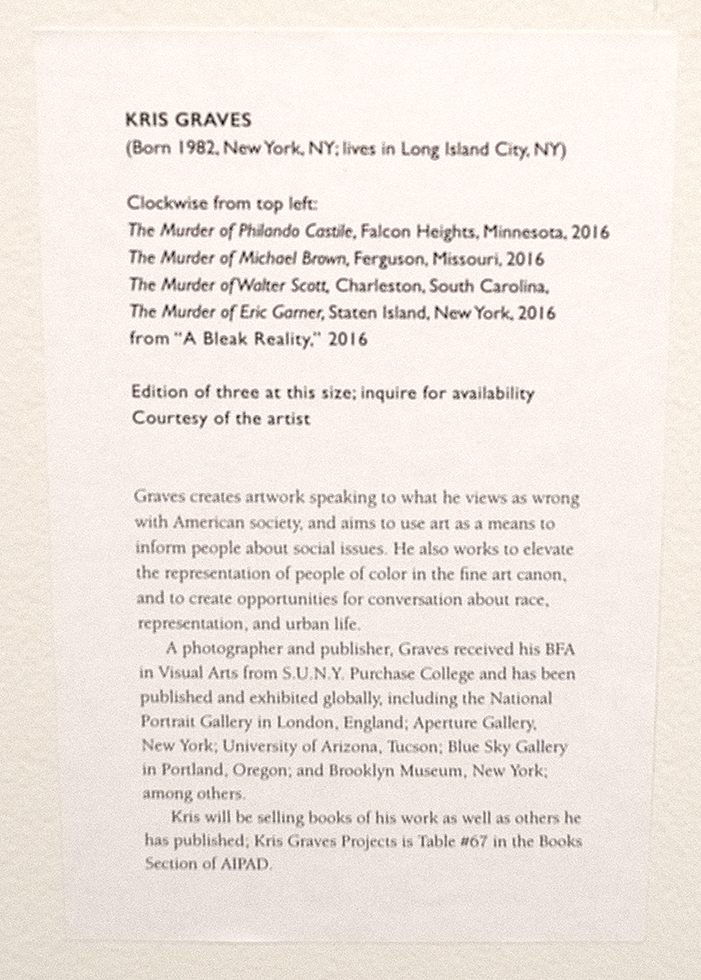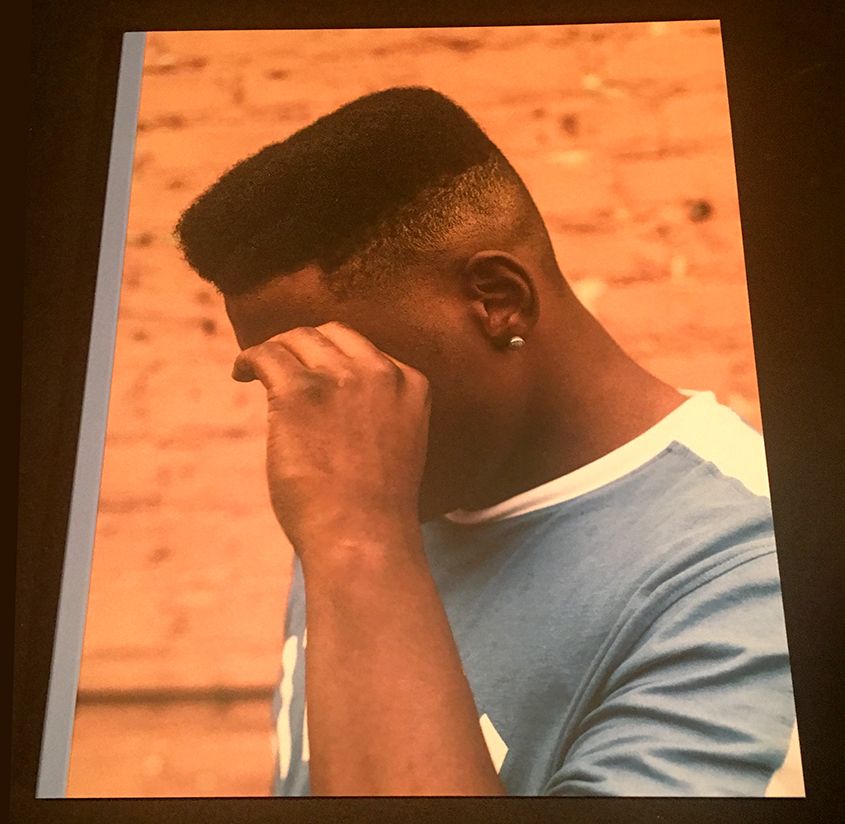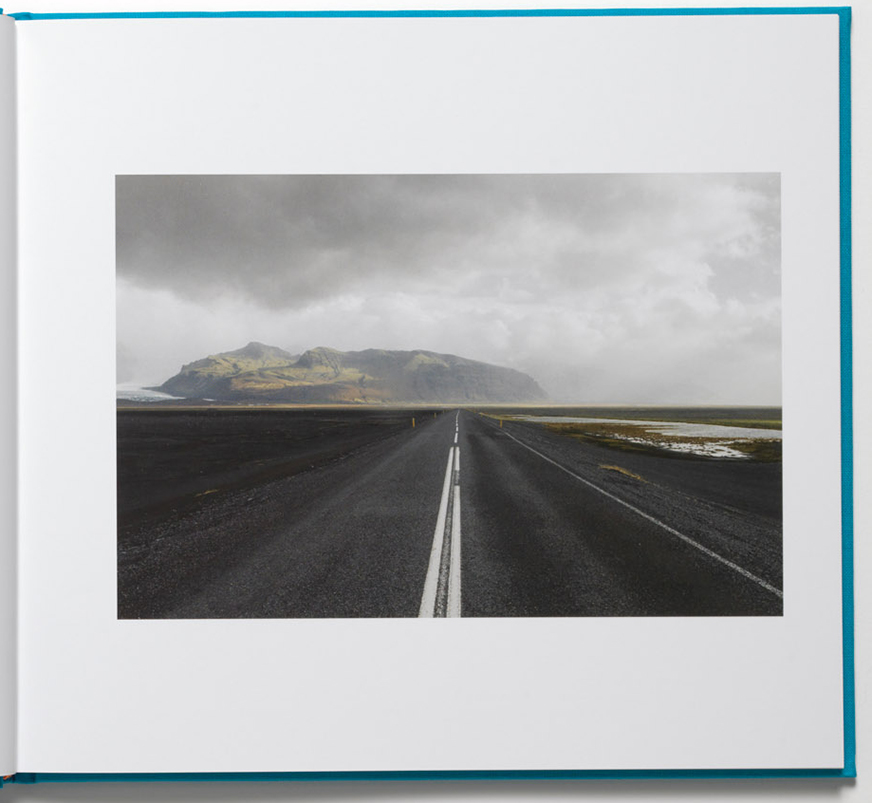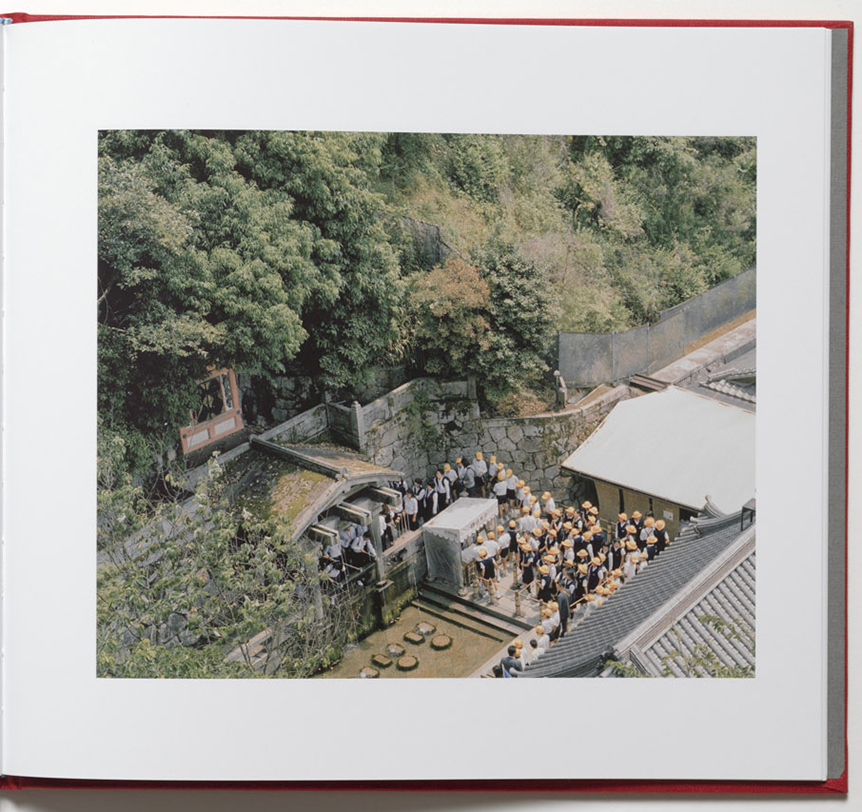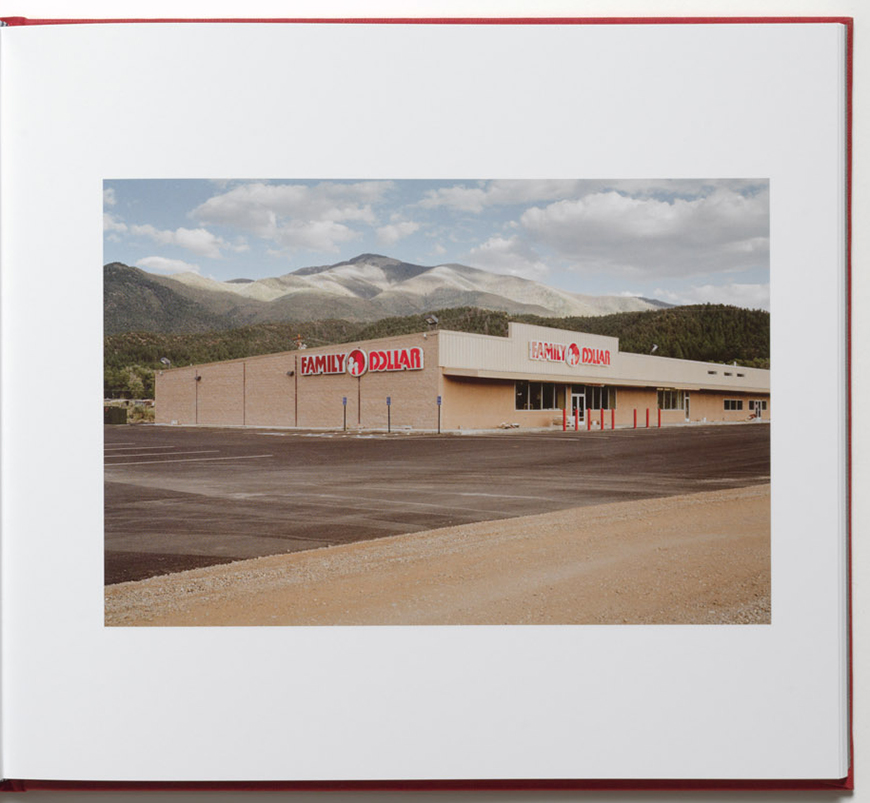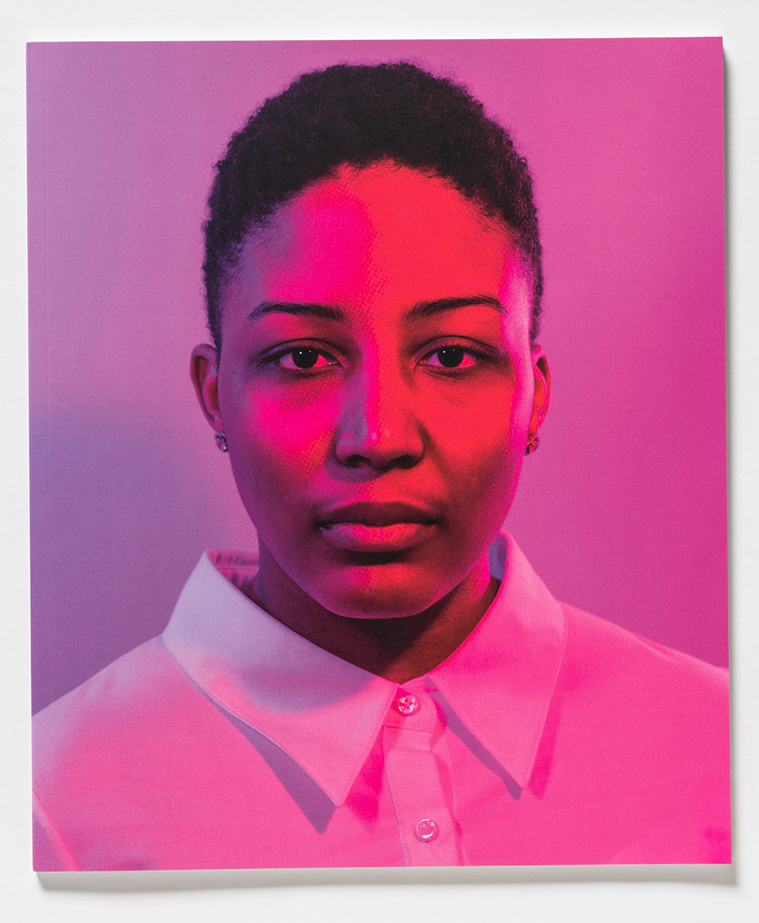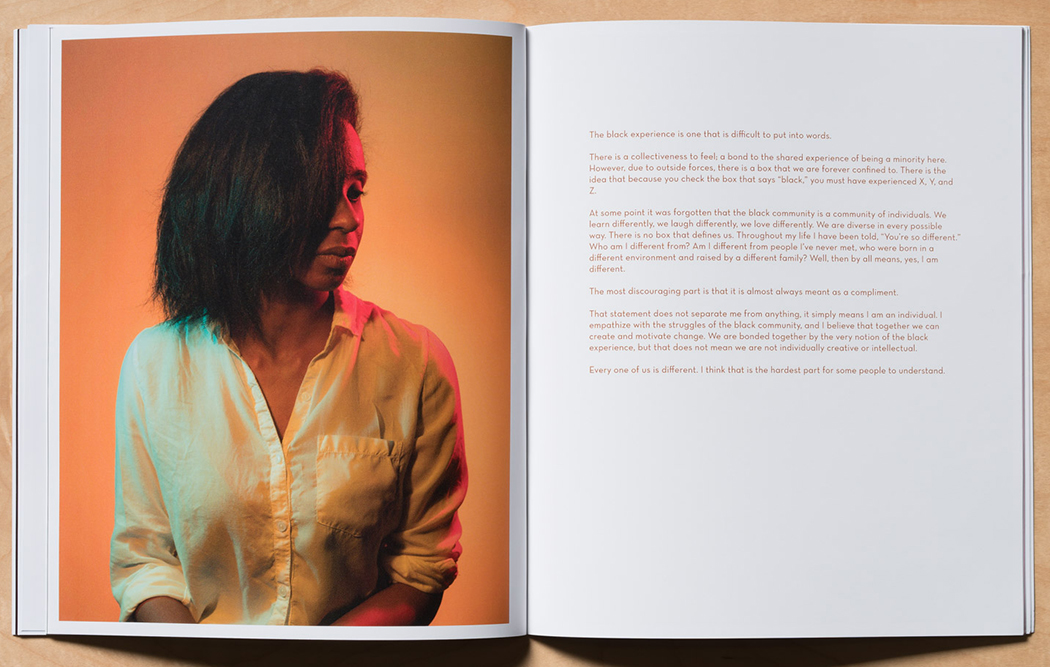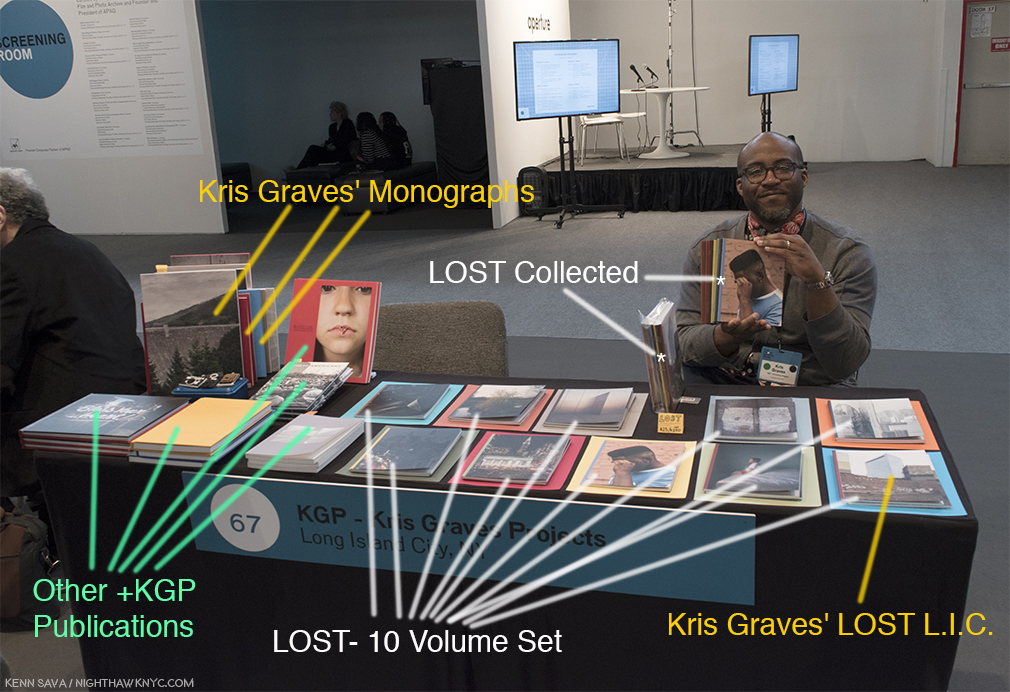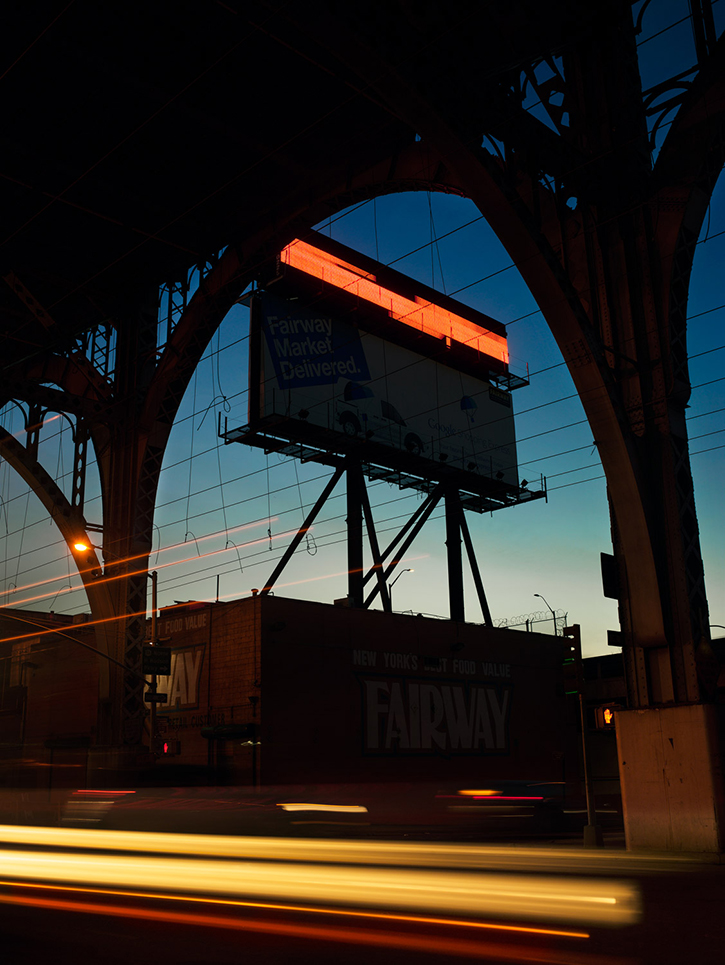Special Exhibitions have become a welcome part of The Photography Show/AIPAD, and 2018 proved no different. Particularly innovative was “All Power: Legacies of the Black Panther Party,” a show inspired by the 50th Anniversary of the founding of the Black Panther Party branch in Seattle, Washington, terrifically curated by Michelle Dunn-Marsh, Executive Director of Photographic Center Northwest, Seattle.
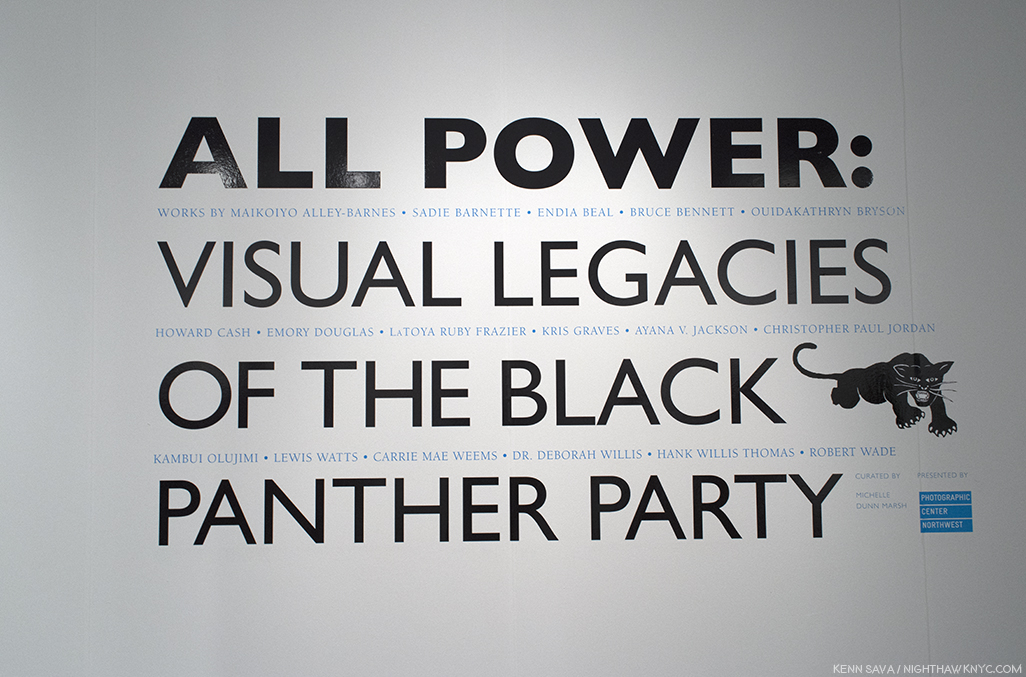
The entrance sign, listing the Artists included along side the Black Panther logo. Click any Photo for full size.
While I highlighted the marvelous work of LaToya Ruby Frazier, and others, in my first piece in this now 4 part series on AIPAD, 2018, among those unknown to me in this exhibition (and elsewhere in AIPAD for that matter), I was particularly taken by this quartet of Photographs by Kris Graves.
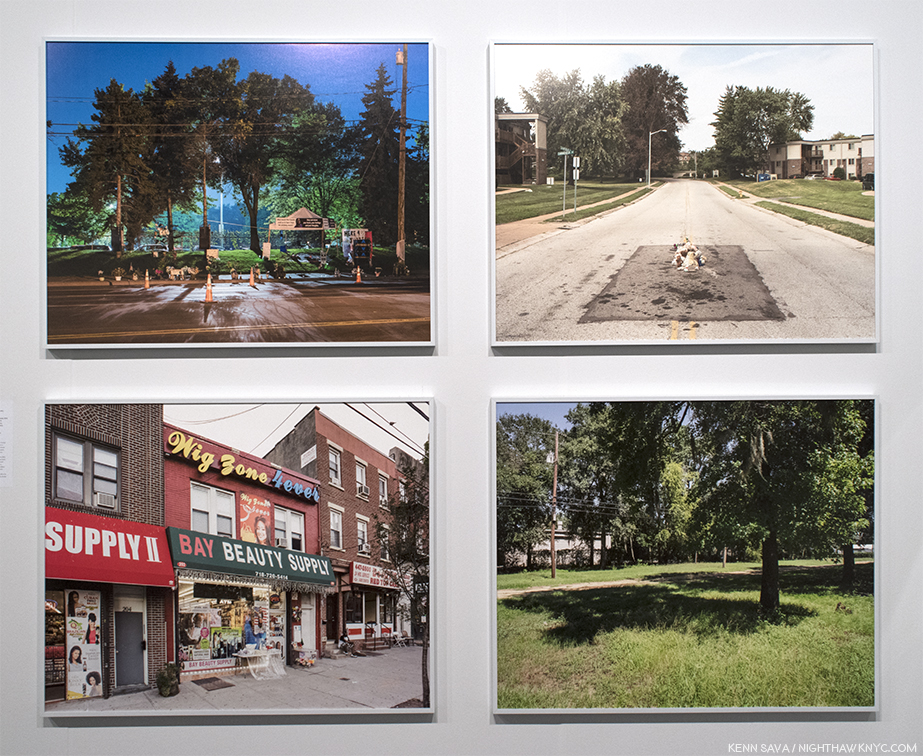
Kris Graves, Clockwise from top left- “The Murder of Philando Castile, Falcon Heights, Minnesota,” “The Murder of Michael Brown, Ferguson, Missouri,” “The Murder of Walter Scott, Charleston, South Carolina” and “The Murder of Eric Garner, Staten Island, New York” from “A Bleak Reality,” 2016.
The images depict the sites where 4 black men were killed by police officers between 2014 and 2016. The quiet poignancy of these works, a notable, and remarkable, contrast to the high pitch all around us today grabbed me hard. Three of the pieces, “The Murder of Philando Castile,” upper left, “The Murder of Michael Brown,” upper right, and “The Murder of Eric Garner,” lower left, contain visible reminders of what happened here in the form of memorials. “The Murder of Walter Scott,” lower right, does not (as far as I can tell). Though the events are in the past, what remains are the media of the actual events and the memories of them. As such, they fit perfectly into the concept of a show about “legacy.” This series, created after, serves to remind us that what happened in each of these seemingly mundane locations, spread throughout the country, can happen anywhere.
As Photographs of an Artist new to me I was also taken with his approach. It says “look at this,” instead of telling you what to think, but it makes me wonder what the Artist is thinking as we see through his eyes. Instead of close-ups of the exact spots, there is a distance in each shot, that makes them each “landscapes,” I find fascinating and powerful. Stephen Shore, Robert Adams, and others, redefined the genre of American Landscape Photography after Ansel Adams and Edward Weston, et al, defined it earlier in the 20th Century, as they felt their predecessors had taken things about as far as they could in one direction. Since the American landscape was rapidly changing post-World War II, they created something that showed what they then saw around them. Kris Graves is one of those doing it, again now, in works like these1, though he returns the human element, which in these works is utterly profound- even when no people are present in 3 of the 4 Photographs. The absence of people echoes the absence of the murdered and leaves us, seemingly, the only ones there. Witnesses, after the fact.
Obviously, “All Power: Legacies of the Black Panther Party,” is a remarkably well done special exhibition. I reached out to its curator, Michelle Dunn-Marsh, to ask her about Mr. Graves inclusion in the show. She told me, “I met Kris at Photolucida last April having known of his work through Aperture, and in October Terry Novak and I did a studio visit with him. Shortly thereafter I invited him to consider participation in this exhibition, and he told me of the series we had on view at AIPAD. It was powerful in not only content but also adding a landscape dimension to the exhibition, which is predominantly figurative, so his work, Sadie Barnette’s FBI documents, Ouida Bryson’s still life and Christopher Paul Jordan’s collage were additive on multiple levels. I think Kris has received a lot of attention for his portraits so it was also an opportunity to bring awareness to other bodies of work he has created.”
Before I left the exhibition, I noticed the lower part of the nearby info card.
Not only is Mr. Graves an accomplished and formidable Artist, he is ALSO a Book Publisher! AND? He has a booth in the PhotoBook area! It just so happened that the gentleman manning the information table at “All Power” had bought a copy of Mr. Graves latest publication, “LOST Omaha,” and urged me to look at it. I was immediately impressed by its quality, and the quality of the Photographs by Zora J. Murff. It looks and feel different than 90% of PhotoBooks I see, and at 28.00 the gentleman felt it was cheap. Cheap in price is not a term I hear applied often to new PhotoBooks. Hmmm…
Overnight I did my customary “getting up to speed” research after being taken with the work of an Artist I previously didn’t know, (as I did with last year’s AIPAD “Discovery,” Gregory Halpern), and my initial impression was, again, confirmed. On his site, krisgraves.com, I saw an Artist who’s taking new approaches to a wide range of genres, from the portrait to landscapes, as well as someone who’s making real contributions to moving the ball ahead when it comes to representations of people of color in his work, and the resulting gallery and museum shows. I found that “A Bleak Reality” had been commissioned by Vanity Fair, in September, 2016. More of the series may be seen here. More recently, in March of this year, Mr. Graves documented each and every one of NYC’s 77 Police Precincts(!), something I doubt many people who live here, like me, have ever seen more than one or two of. They are, typically, fascinating. As Photographs, some remind me of Bernd & Hilla Becher, but as in all his work, Kris Graves has his own style, and as I looked at more and more of his work, I began to feel the Artist’s preference for observing at a distance present in much of his work.
Kris Graves is someone who sees the big picture.
Moving over to his publishing site, krisgravesprojects.com, I looked at his 2013 monograph, “Discovered Missing.” Though the Photographs were taken in Iceland the style reminded me of “A Bleak Reality” at AIPAD. After Mr. Graves’ work draws you in to “look at this,” his images retain your attention. Still looking becomes meditating.
His work is beautiful, cerebral, both ethereal and earthy, grounded in the streets, while it reaches beyond, and expresses…well, that’s up to each viewer. His landscapes are often blessed with a feeling of the miraculous moment of discovery- the perfect scene of the empty dollar store parking lot in front of the breathtaking mountains behind, or, we’re on a cliff looking down on a group of Japanese in yellow hats, or the perfect spot to catch a majestic cliff towering over a distant lighthouse, or a two lane blacktop on an open expanse of flat road that seems to be leading to a distant mountain, partially shrouded in clouds. In many of these works, the recurrent element of distance fascinates me.
Some are odd juxtapositions, almost like stories with two parts. They’re partially works that could be called “New Topographic,” but they’re not. Boxes don’t fit here (or with any Artwork really). They’re scenes from a near and foreign world, where even what’s seemingly “familiar” seems strange. Kris Graves gets us to look at our surroundings while not allowing us to feel comfortable in our assumptions. Instead, it’s like he’s sharing his observations and making us think about what we’re seeing.
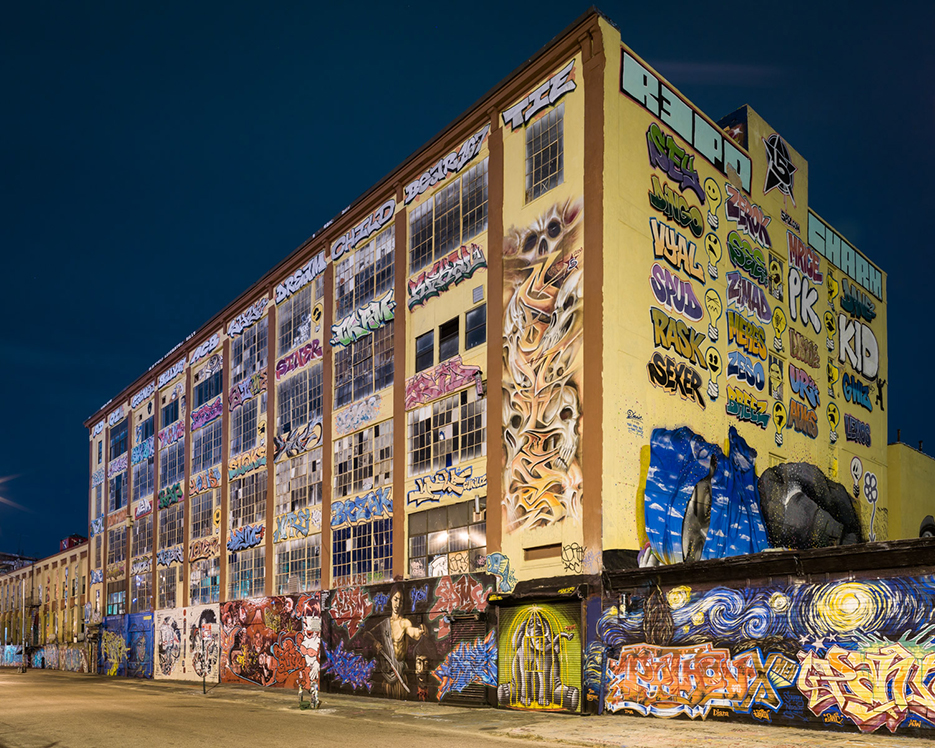
“R.I.P. 5Pointz, Long Island City, 2013,from “LOST LIC.” Courtesy of the Artist and Kris Graves Projects. 5Pointz was a mural space on Davis Street that was demolished in 2014, after efforts to save it failed.
His colors also fascinate. They, too, are characters in what we see. In his landscapes, they serve to convey mood, or to create a dialogue between sections of a work.
But then, in his innovative series of portraits, “The Testament Project,” the Artist gave control of the lighting to his subjects.
“By including subjects in the creation of the scene and altering of color, I seek to create Photographs that portray individuality in addition to their blackness,” he’s quoted saying on his site. His portraits also show us another side, of the subject, in a way I’ve never seen attempted before, which given the millennia long history of portraiture is no mean feat. To this point, Artists have had the complete control over their subject’s appearance. In Kris Graves’ “Testament Project,” he emphasizes the individuality of the subject by giving them control of the lighting, which allows him or her to become part of the actual creation of their portrait. This, too, can be said to be observing from a distance.
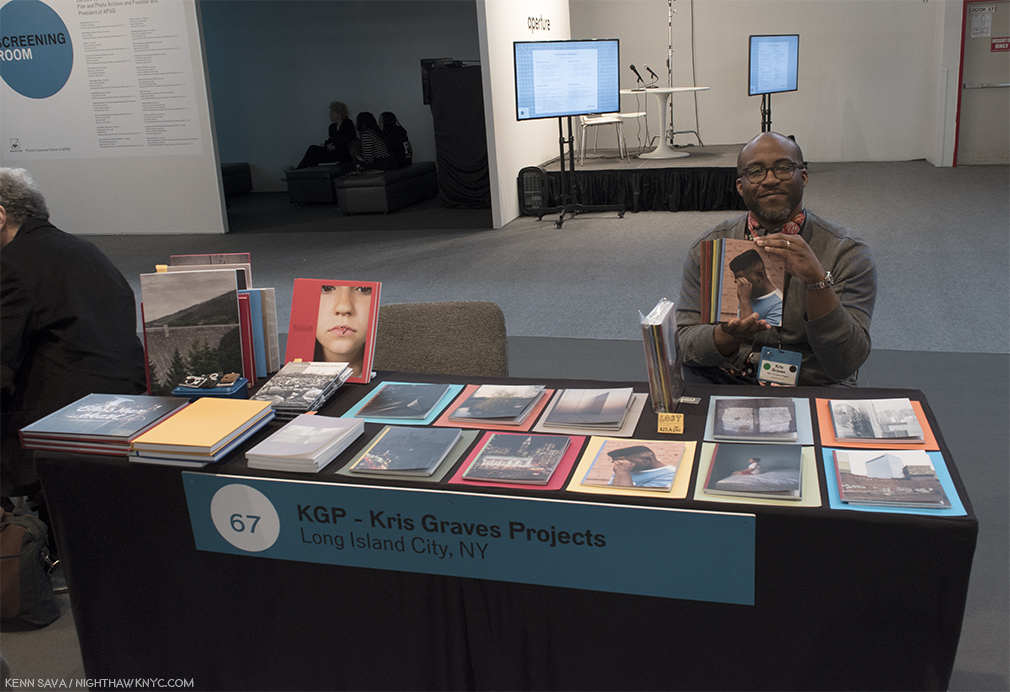
Photographer & Publisher, Kris Graves here figuratively wearing his Publisher’s hat, proudly displaying the new 10 volume set, “LOST,” his Kris Graves Projects just released at his +KGP table in the book area.
Sunday, April 8th, I headed over to the Kris Graves Projects booth at AIPAD, and lo and behold, there was Mr. Graves, himself, like Gilles Lorin, Stephen Wilkes, and Mr. Tony Vaccaro (as seen in Part 2), patiently answering questions from anyone else who happened by, including a never ending stream of folks who seemed quite familiar with Mr. Graves and his work. While I was standing there, an Artist came by and actually pitched a book project to him.
So, wait. Just who is Kris Graves? He’s an NYC native now based here and in London. He received his BFA from SUNY Purchase and has had his work displayed at the National Portrait Gallery, London, Blue Sky Gallery, Portland (where Kris Graves is now on the Board of Directors. Christopher Rauschenberg, Robert’s son, is President), and the Brooklyn Museum. In 2017, he was among 5 Shortlisted for the prestigious Aperture Portfolio Prize, out of 700 porfolios reviewed. His Art is in the collections of said Brooklyn Museum, the Museum of Fine Arts, Houston, and his Publications are in the collections of the Watson Library at The Metropolitan Museum, the Guggenheim Museum, Yale University Library and the Whitney Museum Library. He has been showing his work since 2006, with his most recent solo show at the University of Arizona, 2017. There are currently 38 Publications on the Kris Graves Projects Online Store, including 6 marked “Sold Out,” as I write. Of the total, “only” 9 are of his Photography.
After my overnight research, I was interested in his monographs, “Discovered Missing,” 2013, consisting of Photographs taken in Iceland, and “Permanence,” 2012, Photographs from 2003-12. Faced with the items on the table, above, I didn’t see them. So? I asked for them. He produced a copy of “Permanence” from the row of standing books on the far left! It’s the red book that’s peeking out, second from the front.
Wait.
WHAT Artist pays for a booth at AIPAD and then doesn’t prominently display his own work? (Ok, yes, his publications are “his work” as well, I grant that. I’m referring to his Photography, which others, like myself, might just be discovering at the show.) The only reason I left with 2 of Mr. Graves books was by knowing I wanted them going in, and I HAD TO ASK FOR THEM! And? In both cases, he told me that they were the very last copies!
Hmmmm…
They’re not prominently on display, but they just sold out. Wow. I’m not the only one taken by Mr. Graves Photography. Late to the party, again. And? I’m about to be as impressed by his publishing. Let’s take a closer look at that Photo of Mr. Graves and exactly what IS on his KGP table at AIPAD, shall we?
Heres’ what I saw. The new 10 volume set, “LOST,” consisting of a series of books, each featuring one city was front and center as it is newly completed and being debuted and offered as a Limited Edition of 25 Box Set at a special price at the show. Mr. Graves is proudly holding a set, with the newest volume, “LOST Omaha,” in the front. He should be proud of it.
As you can see, the 10 volumes of “LOST” are “LOST New York” (with Photos by Lynn Saville), “LOST LIC” (Long Island City)(Photos by Kris Graves), “LOST Berlin” (Photos by Andreas Gehrke), “LOST Calcutta” (Photos by Laura McPhee), “LOST San Francisco” (Photos by Luke A. Abiol), “LOST Chicago” (Photos by Owen Conway), “LOST Boston” (Photos by Michael Cardinali), “LOST Beijing” (Photos by Lois Conner), “LOST Seattle (Photos by Joseph P. Traina), and “LOST Omaha” (Photos by Zora J. Murff)- which completed the series). Each is prominently shown. To the left, with the green lines are other KGP Publications, including “These Americans,” by Mercedes Jelinek, “all that cannot be said,” by Colin Stearns, “Bless Your Heart,” by Grant Ellis, “A Place to Disappear,” by Pablo Lerma and “Blood Line” by Anne-Laure Autin.” The first book in the vertical stack on the right is the last copy of “Provisional Scenery,” 2015 by Kris Graves, his other monograph that I purchased.
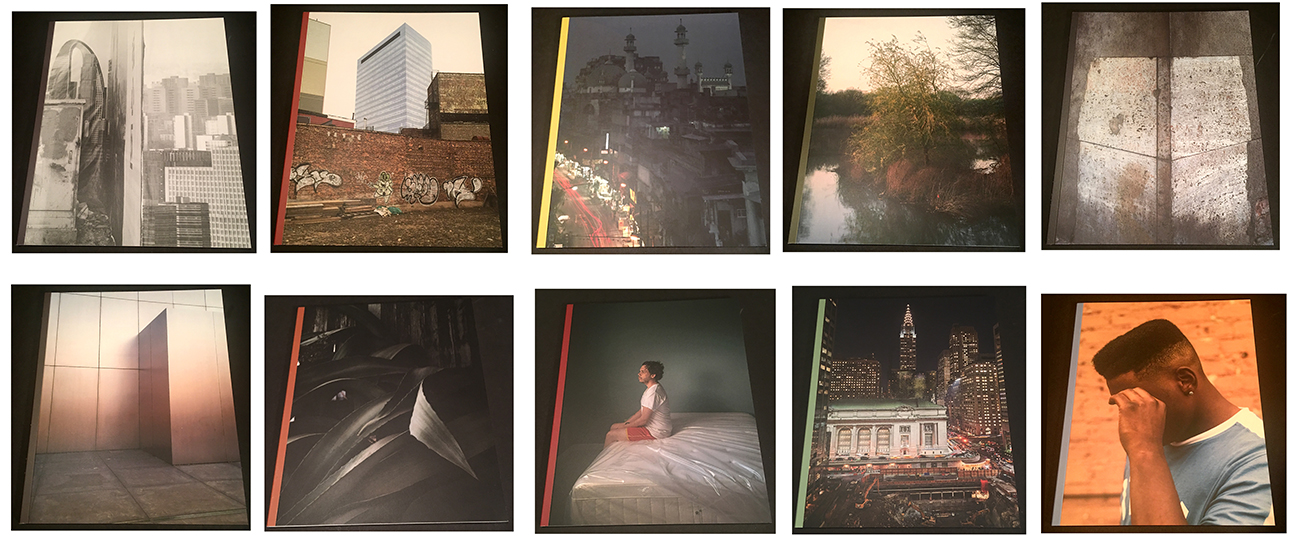
Can you match the cover image with the city? Time’s up. Top row, left to right- “LOST Beijing,” “LOST L.I.C.,””LOST Calcutta,””LOST Boston,”and “LOST Berlin.” Bottom row- “LOST Chicago,””LOST San Francisco,””LOST Seattle,””LOST New York,” and “LOST Omaha.”
The Artists he publishes are Photographers Mr. Graves told me he has “known for a while.” In “LOST,” through each Photographer’s work, we visit the subject city as if we’re “lost” in each place, without a GPS. Few famous landmarks are Photographed, yet, the sense of each place is undeniable. Some of what is seen could be seen anywhere. But it’s not. Its all organically specific to the place its in. These images created by 10 individual, poetic, sets of eyes, are brought together and unified under the singular vision of their publisher, and in that sense, they are truly collaborations. I found the results to be uniformly strong throughout all 10 books, As you move from book to book, from city to city, Mr. Graves overall concept of the series combines with the difference in the Artist’s styles, and content, to create the set’s overall impression and make for a wonderful internal dialogue that holds them together as a “set.” As such, it’s the ultimate “anti-travelogue.” No one is going to go to any of these cities looking for most of these sites. As in his Photography, Mr. Graves is something of a “visionary observer,” at a bit of a distance, here, too, in my view.
The Artist told me he named it in honor of how he felt after he left his job at the Guggenheim Museum. It’s a good thing he told me that, because looking at the set, the direction, focus and execution of the entire project is ANYthing BUT “LOST.” It not only feels like he knows EXACTLY what he’s doing, but how to pull it off, how to seamlessly meld such disparate visions into a cohesive, unique whole. Since Mr. Graves said he’s known these Artists for a while, perhaps that familiarity enabled him to know what he was going to get and how that part would fit into the whole. Whatever the case is, the results are remarkable, and highly recommended.
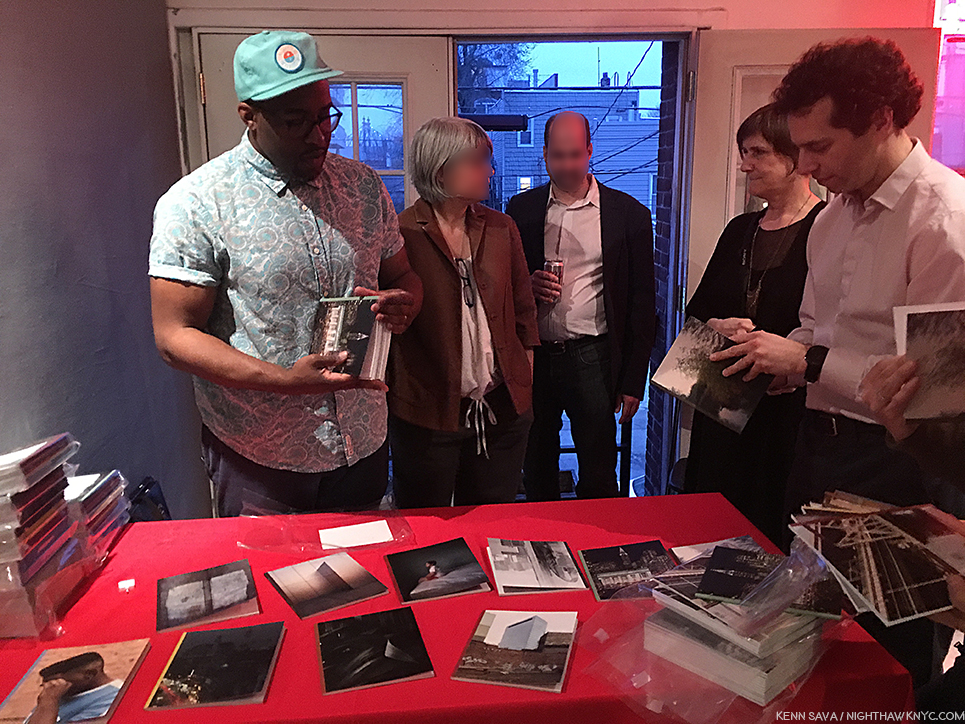
Kris Graves, left, Artist Michael Cardinali author of “LOST Boston,” in the white shirt, right, and Artist Lynn Saville, author of “LOST New York” in black, behind him, at the “LOST” Book Release in LIC on April 14th.
After AIPAD ended, I went to the Book Release for “LOST” in Long Island City, where I bought one of the 25 sets to get the full effect and to familiarize myself with the Artists involved. As good as the individual books are, I now think it really is best experienced as a set. Having had it a week, my feeling is that’s there is a surprisingly high bar that’s maintained throughout, both in the work and its presentation. Having been, briefly, to only 2(!) of the 8 other cities (NYC gets two books), I can only speak about NYC.
Luckily, among the Artists at the Book Release was the accomplished Photographer, Lynn Saville, author of “LOST New York,” who also teaches at both the NYU School of Professional Studies (NYU SPS) and at the International Center of Photography (ICP). Ms. Saville has three monographs published by three major publishers- Rizzoli, Random House and Damiani. I asked her about her involvement in “LOST,” and she said, “He approached me to be a part of his series…and I was intrigued. The timing worked out- and I’m proud to be the “New York” in this series. Another nice thing was the quickness of it – and the other artists – Laura McPhee and Lois Conner and several other photography artists – I really like the off-beat selection of cities and the scope of it…. They are like artist’s books – and the box set is very nice.”
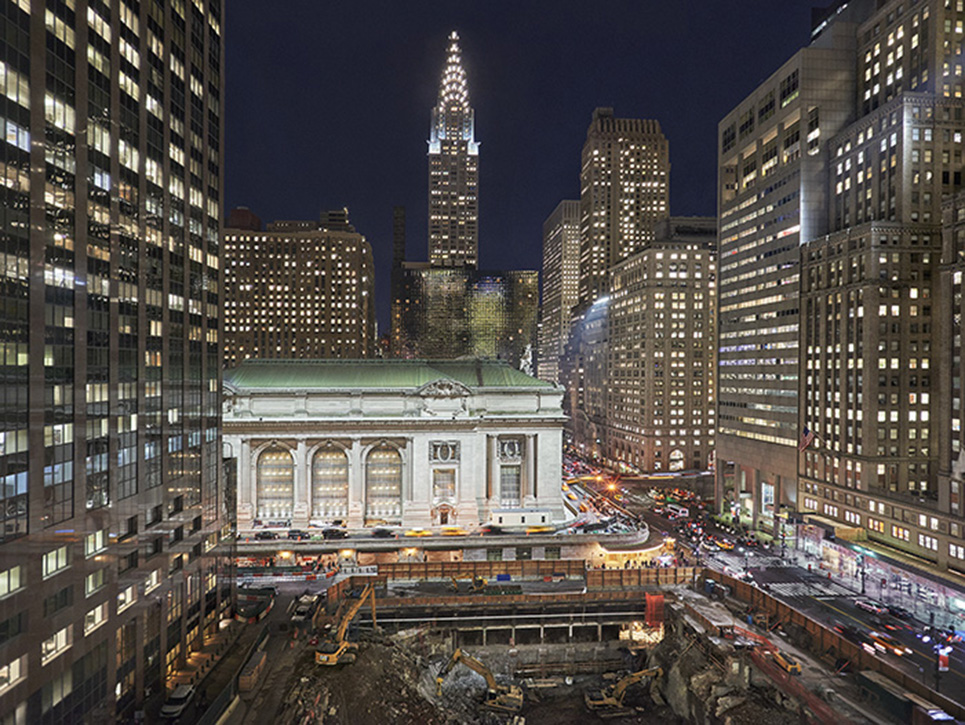
Lost, from “LOST New York.” You now have to look at Lynn Saville’s work to see this view of Grand Central Station and the Chrysler Building along East 42nd Street since the Vanderbilt skyscraper has gone up right in the front. It’s cropped on the cover, but this full image is inside her new “LOST New York.” Courtesy of the Artist and Kris Graves Projects.
In Lynn Seville’s “LOST New York,” there are some familiar sights. Or were. This spot near Grand Central Station on the cover of “LOST New York” is now filled by a gigantic skyscraper that’s gone up in the interim. Its “Lost” in a different way. This view is now lost. Ms Seville told me that person who’s window this is complained about that very fact.
I asked her what went into her decisions as to what to include in “LOST NYC” and how to sequence them. She told me, “In choosing pictures for and sequencing this book, I sought to include each of the various strands of my past work. Also, I was influenced by my recent commission from the MTA, Arts & Design (her work is being shown in a solo pubic art exhibition at Grand Central Terminal), which involved photographing the western façade of Grand Central Terminal, newly exposed to view by the beginnings of construction at One Vanderbilt Avenue. These pictures, one of which appears on the book’s front cover, recalled my initial interest in the city’s iconic structures. For me, therefore, the book is a polyphonic weaving of my various ways of seeing and engaging with the city.”
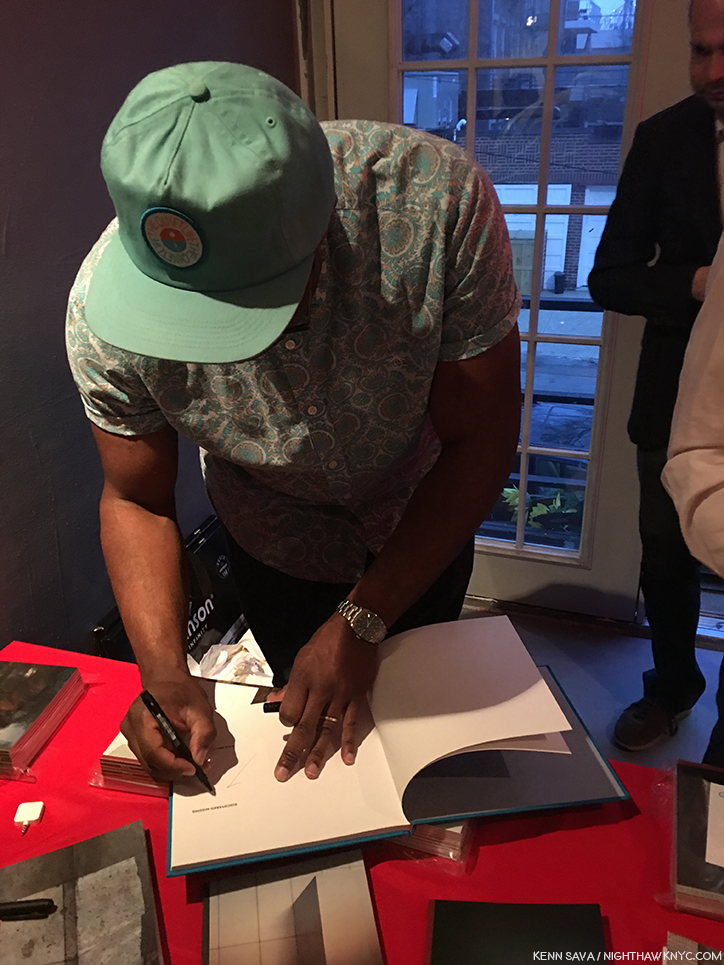
Kris Graves signs his out of print “Discovered Missing,” 2013 for another guest at the “LOST” Launch.
When I saw his “A Bleak Reality” works in “All Power,” I noticed the info card, pictured earlier, has his birthdate. Not caring all that much about age I didn’t do the math. I only noticed that Kris Graves is in his 3rd decade and the second number was not a big one. Think about this for one minute-
In a show as big as AIPAD which includes 100 of the world’s leading Photo galleries going toe to toe presenting their finest work, it’s INCREDIBLY hard to be noticed as a young Artist alongside the likes of Diane Arbus, Robert Frank, Gordon Parks, Atget, Ansel Adams, Walker Evans, William Eggleston, Bruce Davidson, Daido Moriyama, Robert Capa, and on and on and on. In a PhotoBook area that includes the likes of Steidl, Mack, Akio Nagasawa, TBW Books, Art Book DAP, Damiani, Minor Matters, and Aperture, a small, independent, Artist-run Publishing company is there, WITH the Artist/Publisher in attendance EVERY DAY, selling out of multiple titles of quality books.
For ONE young person to be doing BOTH of those things, successfully at AIPAD? It’s just unheard of. That’s why Kris Graves struck me as THE Artist & Publisher discovery of AIPAD, 2018.
There will be those who will look at all of this and say. “Wow. Kris Graves has a bright future.”
I look at it and say- The future is now.
*-Soundtrack for this Post is “Let’s Get Lost,” by Chet Baker, which you can hear here.
My thanks to Kris Graves, Lynn Saville, Michelle Dunn-Marsh, and the gentleman manning the “All Power” Booth on Saturday, April 6th.
The Photography Show/AIPAD, 2018, is my NoteWorthy Show for April.
This is the last of my 4 Posts on AIPAD, 2018. Once again, for the second year, I’m proud to bring you THE most extensive coverage of The Photography Show anywhere. The rest of it is here. My 2017 coverage is here.
NighthawkNYC.com has been entirely self-funded & ad-free for over 7 years, during which over 275 full length pieces have been published!
I can no longer fund it myself. More on why here.
If you’ve found it worthwhile, PLEASE donate to keep it online & ad-free below.
Thank you, Kenn.
Written & photographed by Kenn Sava for nighthawknyc.com unless otherwise credited.
To send comments, thoughts, feedback or propositions click here.
Click the white box on the upper right for the archives or to search them.
Subscribe to be notified of new Posts below. Your information will be used for no other purpose.
- As I mentioned in Part 1 feeling that one of LaToya Ruby Frazier’s works in the show does as well. ↩

